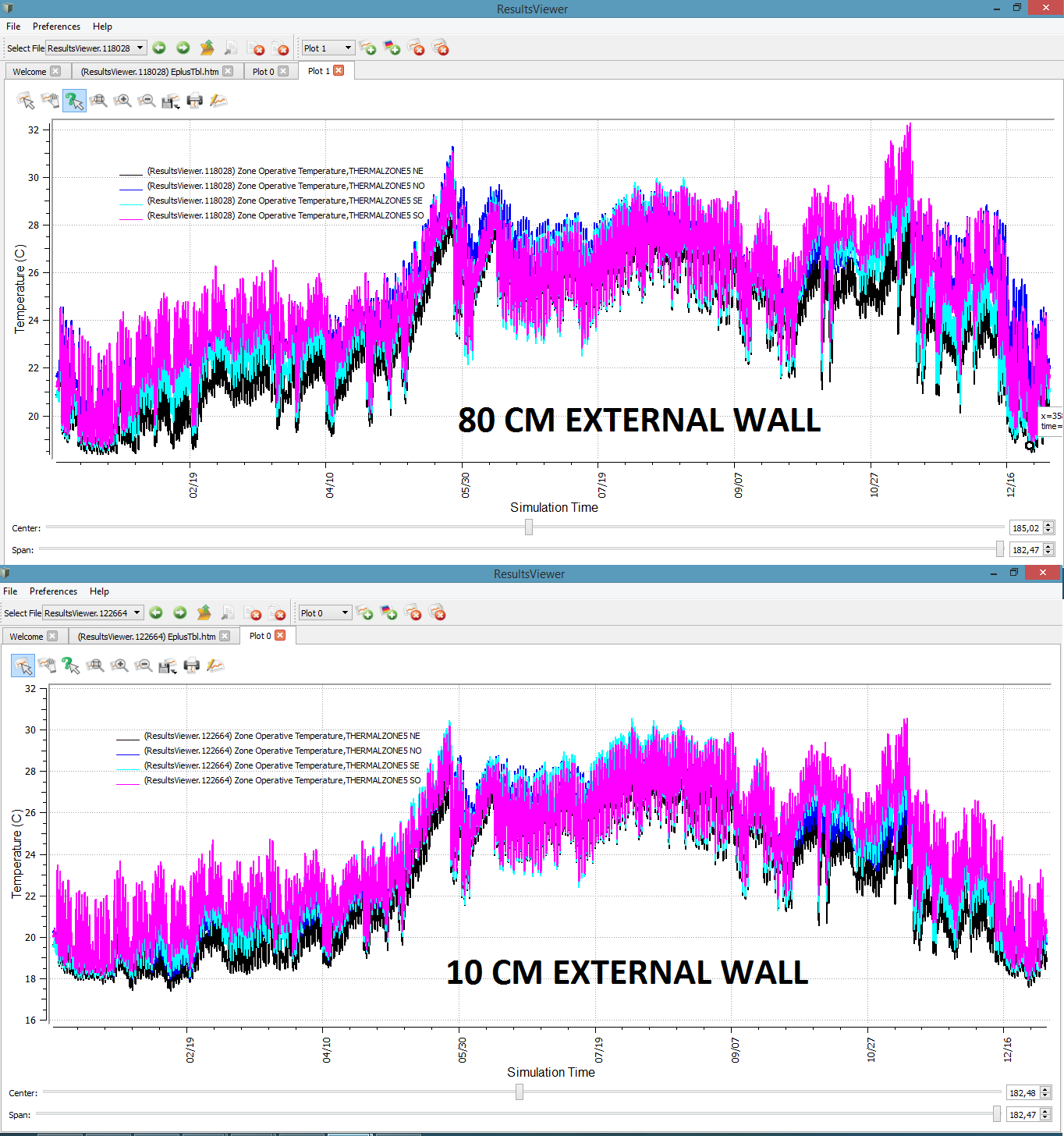Why a high tickness wall generates more discomfort?
I ran 2 simulations of the same building in openstudio, but with 2 different brick external walls (massive wall). These 2 walls have the same thermal properties (I used the same brick material), the only difference is the thickness: the 1st one has a thick of 80 cm, and the 2nd of 10 cm. My question is: how is it possible that during the summer time, it is cooler in the building with the external wall of 10 cm? PS. NO HVAC, just natural ventilation. And I want to repeat : the 2 buildings are exactly the same, only the thickness of the external walls changes. The 10 cm thick-wall has 15800 hours with a operative temp above 88 F, and the 80 cm thick-wall has 21000 hours above 88 F.






